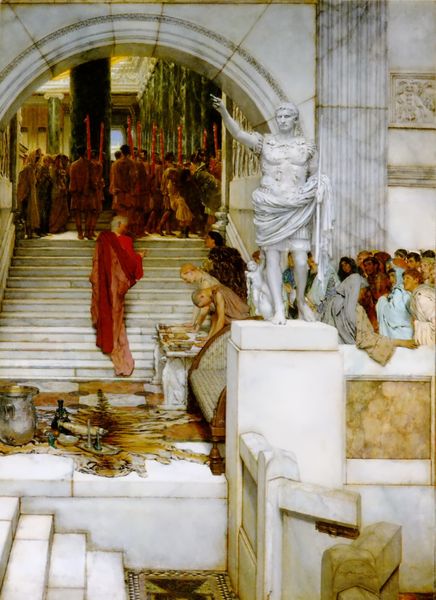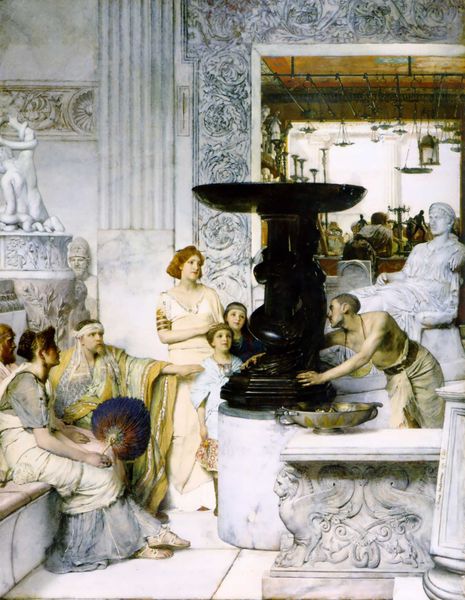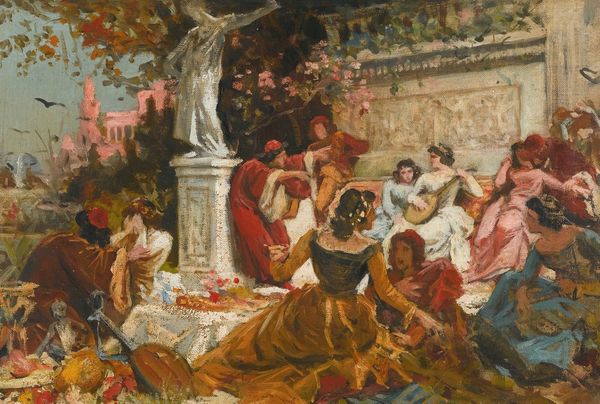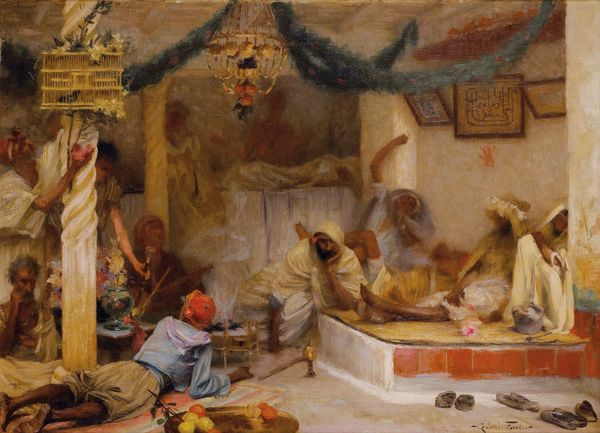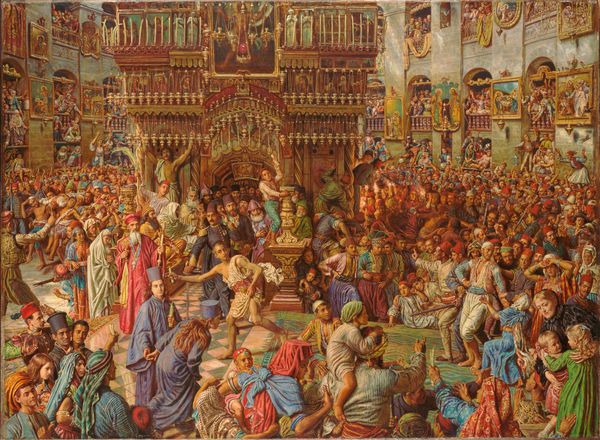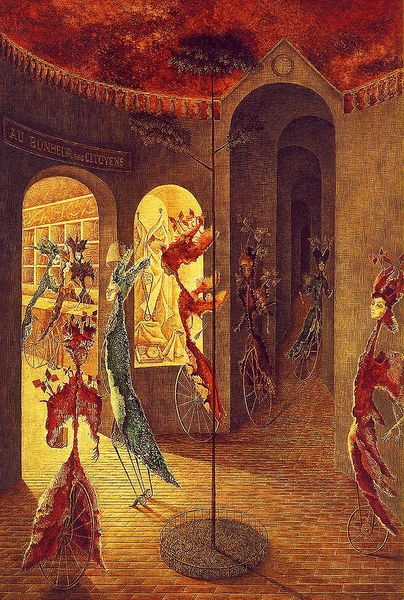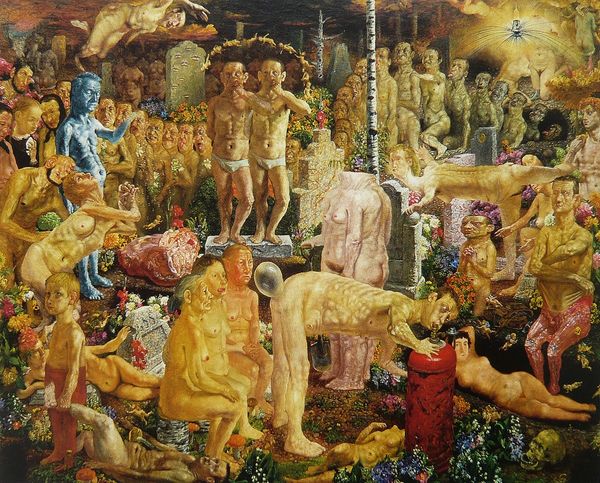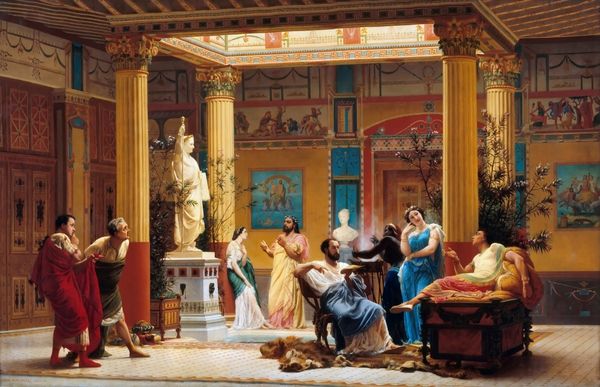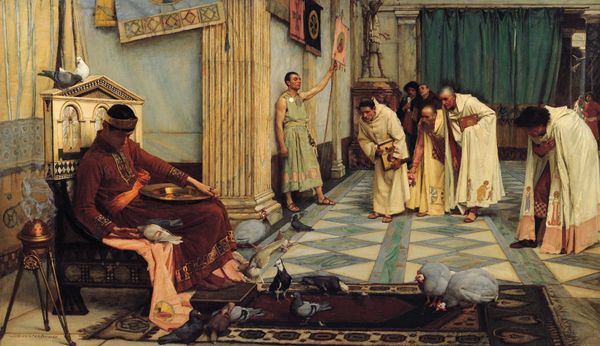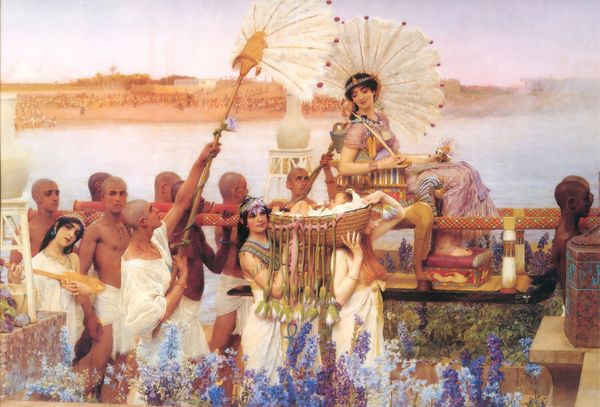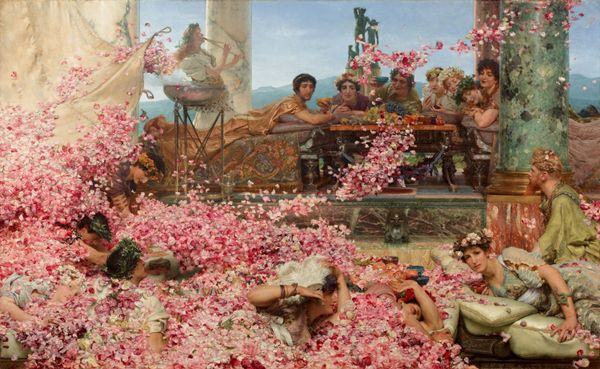
painting, oil-paint
#
painting
#
oil-paint
#
oil painting
#
ancient-mediterranean
#
genre-painting
#
history-painting
#
academic-art
#
realism
Dimensions: 123 x 154 cm
Copyright: Public domain
Curator: This oil painting, "Caracalla and Geta. A Bear Fight in the Coliseum," created by Lawrence Alma-Tadema in 1909, feels quite overwhelming in its detail and scale, doesn't it? I’m curious about your perspective on this work. What stands out to you? Editor: Well, first off, it’s just packed with figures! The architecture is rendered with so much care and detail, which contrasts with the rather gruesome event supposedly taking place below. But, I have to ask, given the apparent meticulous recreation of this historical moment, is there more to it than just what is being depicted? Curator: Precisely! Let’s think about the materials used: oil paint, canvas. How did Alma-Tadema, a Dutch-born artist working in Victorian England, access and manipulate these resources to create an illusion of ancient Rome? He's not just depicting history, he's *constructing* it through material processes tied to his own time. What kind of labour went into making the garments we see the characters wear or quarrying of the materials for the columns in the picture, and to what end? What point do you think Alma-Tadema wanted to drive home to his patrons by putting this on canvas? Editor: I never thought about it that way! He’s using modern materials and labor practices to visualize an ancient spectacle, potentially to both highlight and critique Victorian society's fascination with and perhaps, romanticization of the Roman Empire. Is that it? Curator: Absolutely! He highlights the production behind this representation of history, effectively challenging our notions of authentic pasts. Consider how his paintings, in turn, entered a market, were bought and consumed, like commodities. So, what could you say about the impact of the picture? Editor: Right, so it's less about historical accuracy and more about how Alma-Tadema, through the labor and materials of his time, re-packages the Roman Empire for consumption by a Victorian audience. I now think that Alma-Tadema forces his contemporaneous consumers to critically engage in thinking about history, access and how historical events become resources to support an industry. Curator: Yes, exactly. The materials tell a story about labour, production, and even our contemporary consumption habits when thinking about ancient civilizations. It enriches my understanding of art history as an evolution and a cycle.
Comments
No comments
Be the first to comment and join the conversation on the ultimate creative platform.
